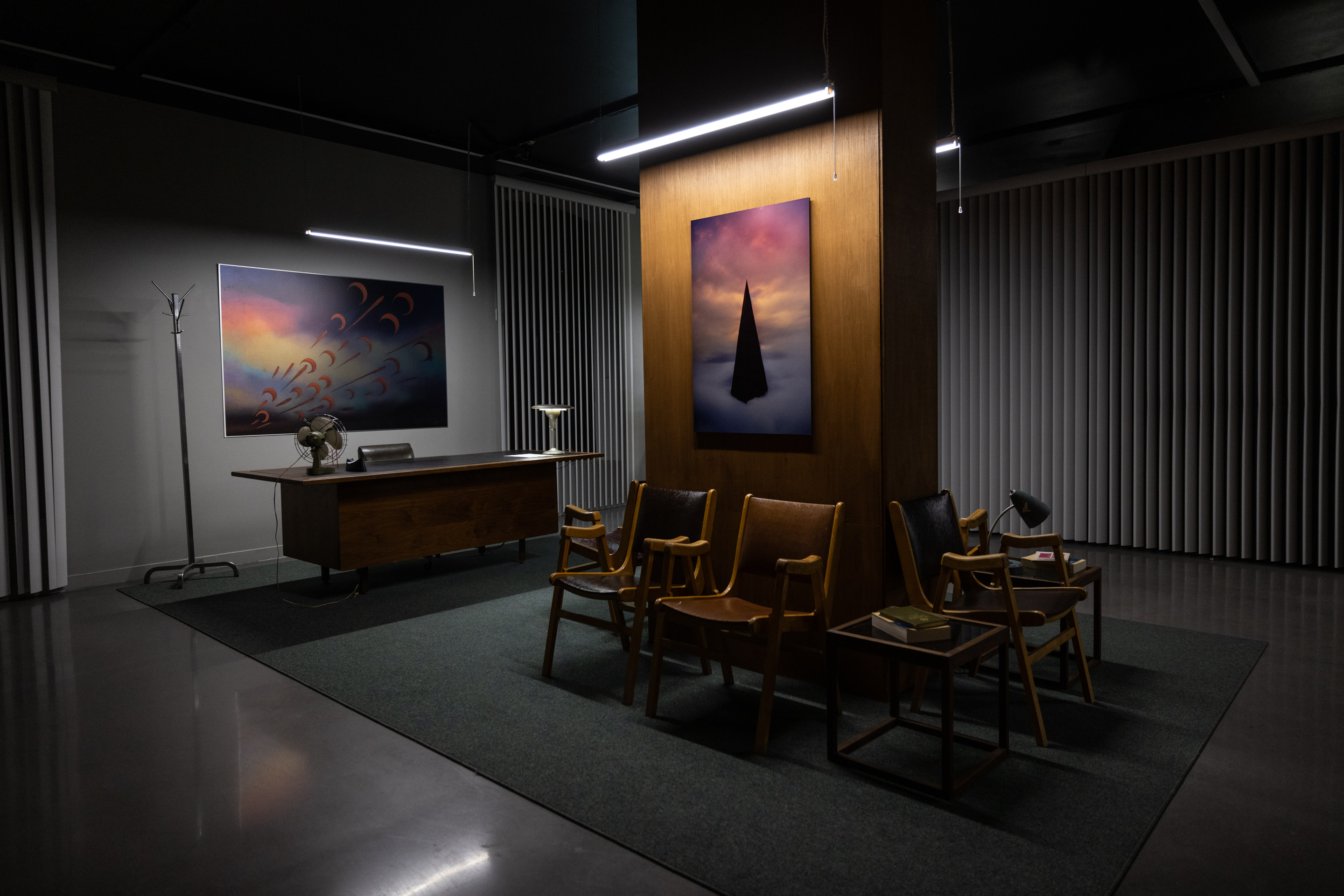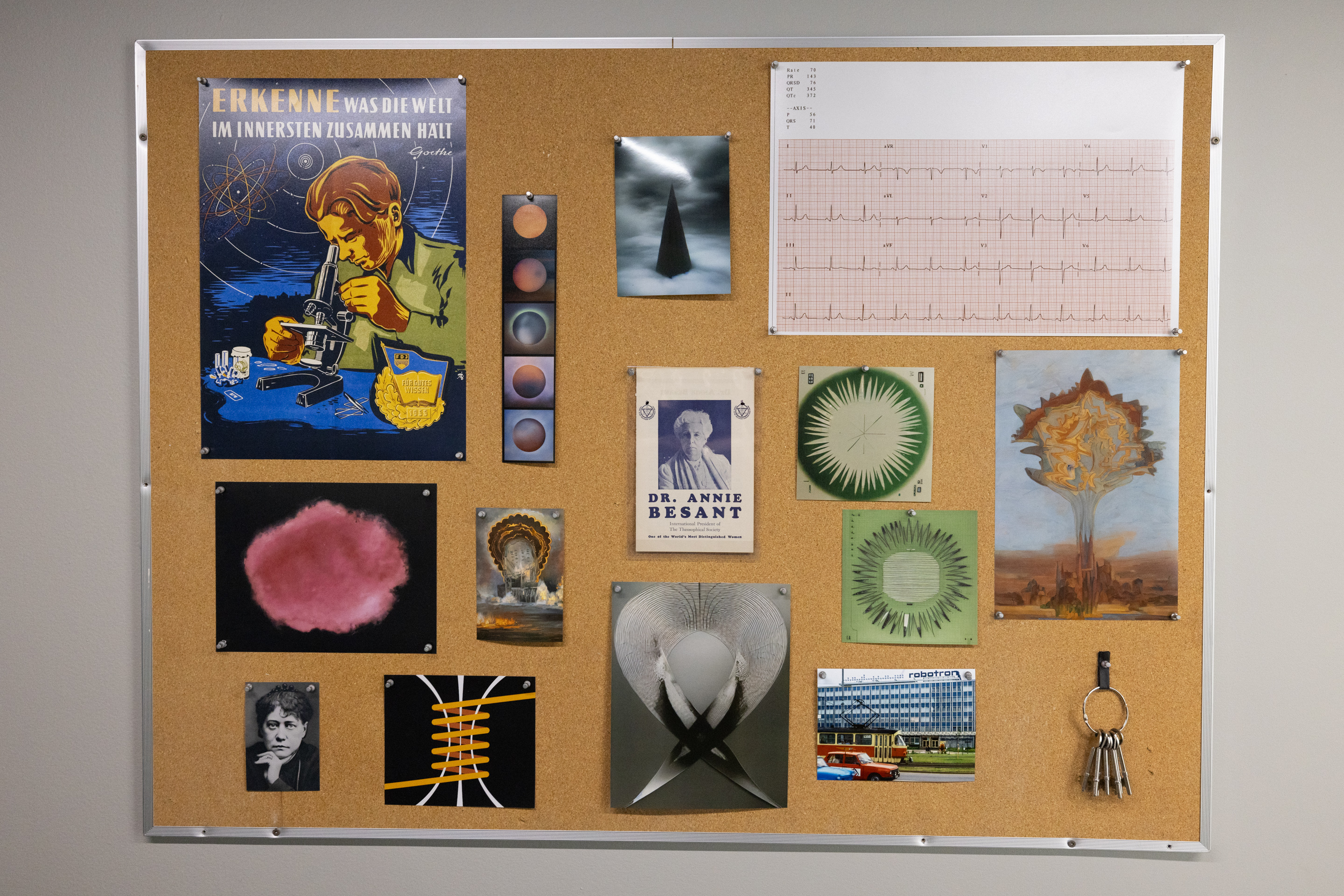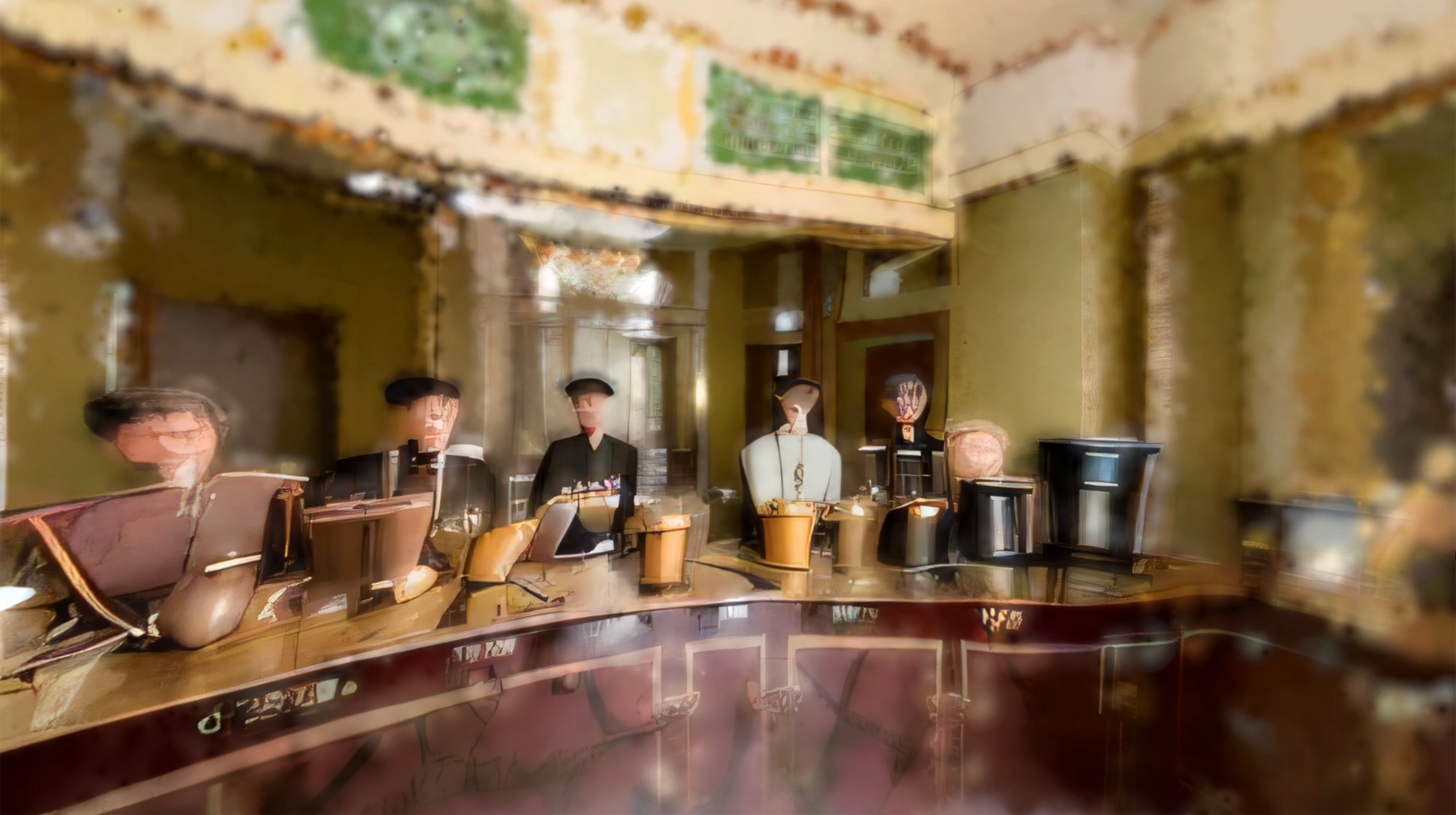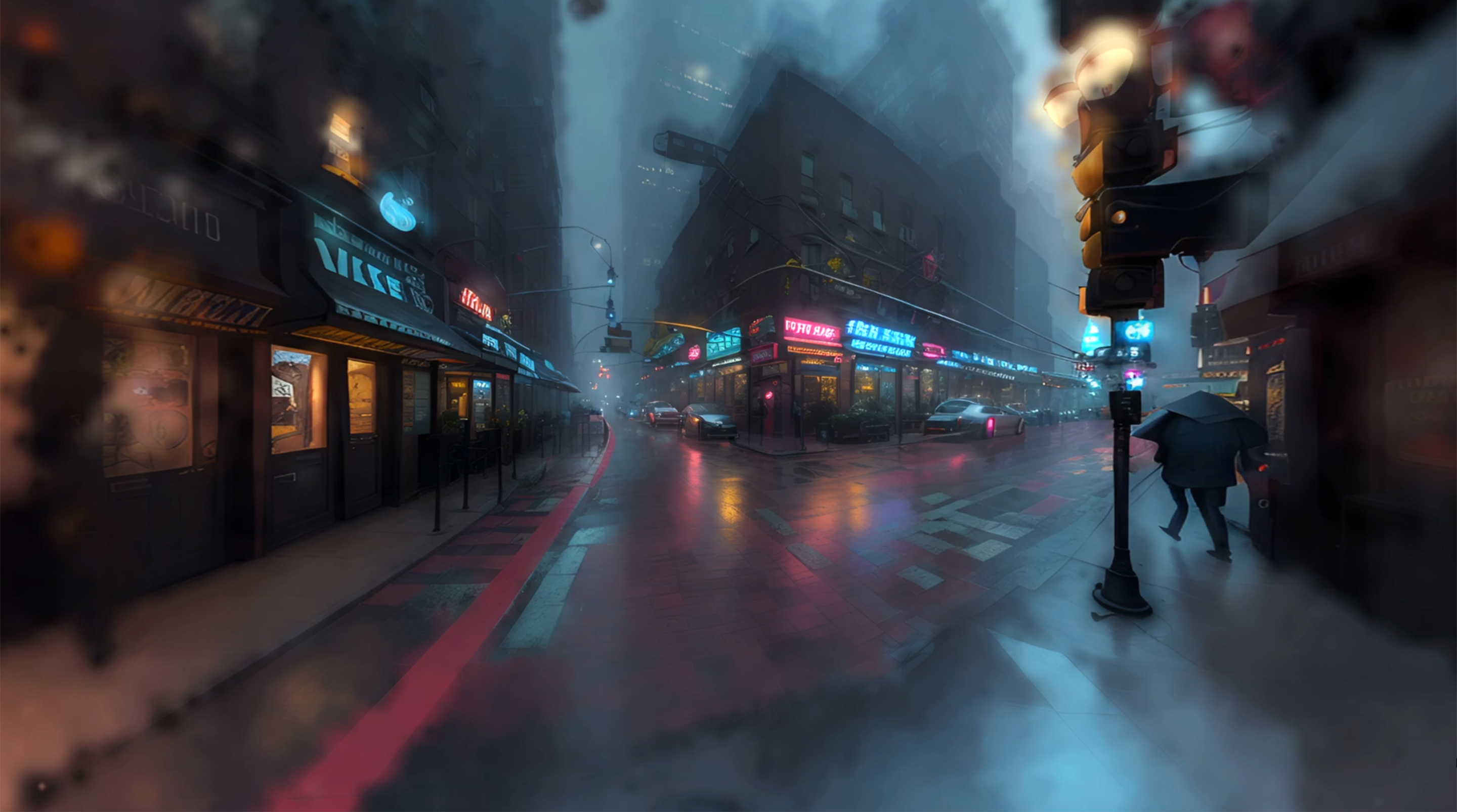TULPAMANCER
Recovered from the laboratory of a deceased East German scientist, a machine that makes thoughts real.

Marc Da Costa & Matthew Niederhauser (2023)
Tulpamancer is a machine learning VR installation that shapes a dreamlike, immersive encounter with the memories and possible futures of each participant. Sitting down at a computer terminal that had been left forgotten in a warehouse since 1989, participants first encounter the tulpa through a series of questions about their own lives. They are then invited to meet in a world prepared uniquely for them. Participants put on a VR headset and are led on a journey by their tulpa through a series of uniquely generated virtual scenes that invoke and question the memories of their own past and their potential fates. Ultimately, every interaction produces a unique work that is deleted at the conclusion of its viewing, left only to resonate in the minds of each participant.

What does it mean to share your life with a machine? The tulpa – an idea rooted in Tibetan Buddhism but popularized by the theosophical thinker Annie Bessant (1847-1933) – refers to the physical manifestation of thought through spiritual practice and intense concentration. A transformation in society now appears to loom with the emergence of AI, a technology that derives its power by concentrating intensely on enormous volumes of online text and images – the digital traces of our collective unconscious. The tulpa was a way of making sense of and providing alternative frames for modernity. This work thus provides participants an occasion to explore alternative histories and futures for AI.
This project was created with the support of the Onassis Foundation USA and ONX Studio.




